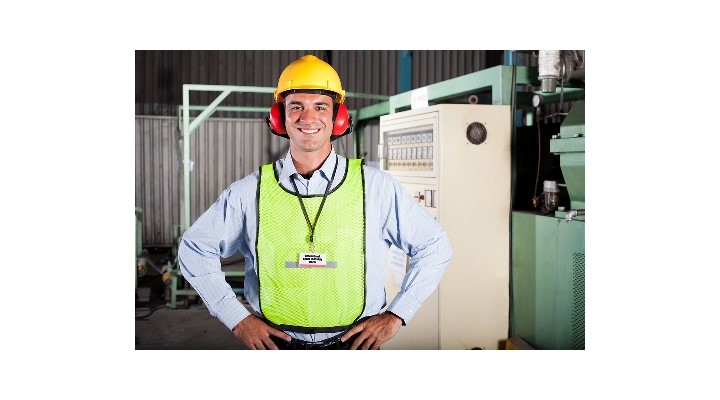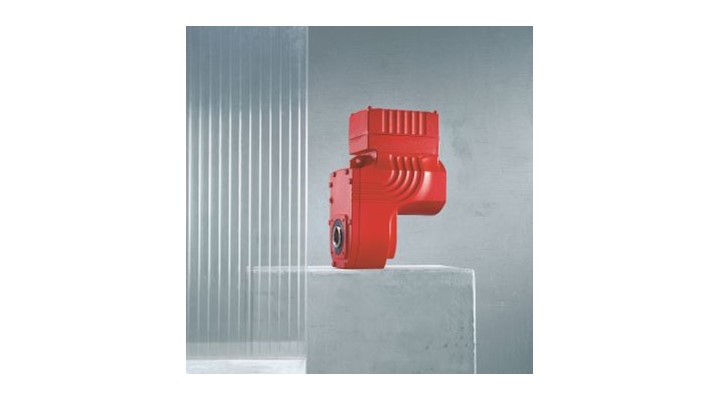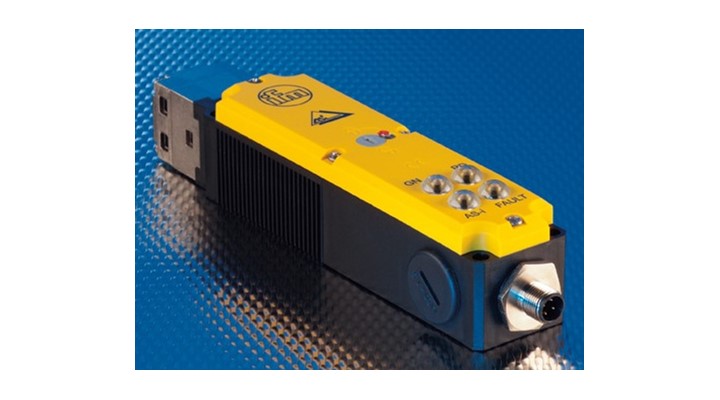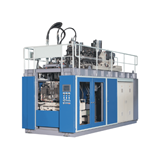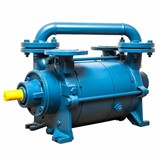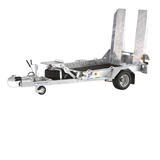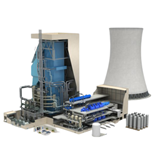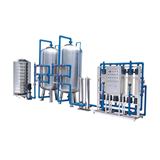Automation and control companies in the Asia Pacific region earned revenues of US$282.2 million during 2012, which is expected to reach US$427.9 million in 2018, according to a report from Frost & Sullivan.
The top three reasons companies invested in automation were: assured return-on-investment; improving safety; and complying with industrial standards, the report said.
But automation is just one way to increase safety, and should be implemented in tandem with other process control equipment incorporating safety features, according to SEW-Eurodrive Victorian sales and product manager, Darren Klonowski.
"Safety compliance expenditure is on the rise as companies are forced to conduct activities such as risk assessments on installed equipment in order to analyse the risks factors associated with it," Klonowski told IndustrySearch.
"Automation alone cannot guarantee safety: only automation which has been designed to relevant safety standards can make the workplace safer."
Built-in safety
In this post-financial crisis era, industrial companies must split their focus between achieving: high performance production; agility; and safety of people, processes and equipment.
While many companies are now turning to automation to help trim material wastage and lower energy prices, it is also a key factor in designing the safest workplace for workers. According to Klonowski however, achieving a safe plant goes beyond simply installing the latest automation system.
"Safety is now a major consideration in the workplace around existing equipment and also when installing new equipment," he advised.
"Wherever there are workers performing duties around moving machinery, particular attention needs to be given to guarding, and reducing the speed of a machine when a worker is in a particular zone.
"Companies need to consider the cost of an injury compared to the expenditure to make the workplace safer."
According to Klonowski, there are many process control products now on the market that offer safety features built in to the system, such as drives.
"Various levels of safety functions are now integrated into drives systems, rather than available as an option. Safety functionality is responsible for safely bringing the motion of a motor to a standstill, or operating the motor at a reduced speed based on various conditions," Klonowski said.
SEW-Eurodrive supplies a number of drive products built with safety in mind, including the cabinet-mounted Frequency Inverter MOVIDRIVE with STO (safe torque off) functionality, and the decentralised mechatronic drive system MOVIGEAR, which also has safety functions built in to the system.
Machine safety solutions
Two companies that work together in the area of process and machine safety applications are ifm efector, which delivers safety solutions, and FSE-Global, which specialises in compliance relevant to Australian acts and regulations.
According to FSE-Global (Melbourne) senior safety consultant, Maurits Funke-Küpper, ever-changing safety standards have lead to safety compliance being a top priority for manufacturers and other processing companies – on par with reducing production costs and retaining skilled workers – however safety functions need to be built in to a system, not tacked on top of it.
"Australian companies are very focused on safety and reducing risks in the workplace. However, many are simply 'conscious' of safety and not focused on the right areas: companies should focus more on eliminating the hazards themselves, rather than applying bandaids," Funke-Küpper told IndustrySearch.
"For example, instead of guarding a shoot from access or preventing a blocked shoot by guarding, you must prevent the blocking in the first place by dealing with the root cause of the problem."
These days there are various regulations that both processing companies and the manufacturers of process equipment must abide by to make their workspaces and products safe.
"New Work Health and Safety Acts and Regulations with matching Codes of Practice 2012 are being rolled out nationwide. The main difference with these new regulations is that the responsibilities are wider: anyone with a decision-making role in the company can be held responsible. There is also a higher focus on the hierarchy of risk control, and safety systems fit for purpose," Funke-Küpper said.
"The most widely-used standard in machine safety is AS4024, however other dedicated standards exist for more specific applications in industry, for example conveyors and robots."
For ifm efector managing director, David Delany, automation is an extremely important factor in workplace safety, however it needs to be implemented along with other safety-related solutions to make for a truly safe workplace.
"ifm efector can combine standard and safe automation, reducing the need for personnel interaction with the machine or process. By clever design and use of sensor technology, production can be optimised and preventative maintenance coordinated," Delany told IndustrySearch.
ifm efector supplies a range of safety products for a variety of applications, such as the AS-Interface (AS-i) Safety at Work line-up which consists of safety monitors, safety modules, e-stop switches, rope pull switches (or lanyards), door switches with guard locking, and AS-i safety printed circuit boards.
The company also provides a range of safety light curtains that operate depending on the type of hazard, for example, the protective function can be classified into hand, primary and body protection.
- Suppliers
- New to IndustrySearch? Book a Demo
- Advertise with us
- Login
- Email Marketing
- Buyers
- Get Quotes
- Articles & Ideas
- Login
- Subscribe to newsletter
- My Details
- Get Quotes
- Automation & Control
- Automotive Workshop Equipment
- Commercial Cleaning Equipment & Supplies
- Construction Equipment & Heavy Machinery
- Conveyor Systems & Components
- Electrical & Power Generation Equipment
- Electronic Components
- Farming & Agriculture
- Food & Beverage Processing
- Forklifts & Forklift Attachments
- Hydraulic & Pneumatic Equipment
- Industrial Materials, Tools & Components
- Industrial Pumps
- IT Hardware & Industrial Computing
- IT Software & Applications
- Laboratory Equipment & Instruments
- Manufacturing & Industrial Equipment
- Material Handling & Lifting Equipment
- Metalworking & Machining
- Mining Equipment & Machinery
- Packaging & Labelling Machinery
- Pallet Handling Equipment
- Personal Protective Equipment
- Security & Surveillance
- Test & Measurement
- Transport & Logistic Equipment
- Warehouse Storage, Shelving & Racking
- Waste Treatment & Environmental Management
- Welding Machines & Accessories
- Woodworking & Joinery Machines
- Workplace Equipment
- Workplace Safety Equipment
- Get Quotes
- Automation & Control
- Automotive Workshop Equipment
- Commercial Cleaning Equipment & Supplies
- Construction Equipment & Heavy Machinery
- Conveyor Systems & Components
- Electrical & Power Generation Equipment
- Electronic Components
- Farming & Agriculture
- Food & Beverage Processing
- Forklifts & Forklift Attachments
- Hydraulic & Pneumatic Equipment
- Industrial Materials, Tools & Components
- Industrial Pumps
- IT Hardware & Industrial Computing
- IT Software & Applications
- Laboratory Equipment & Instruments
- Manufacturing & Industrial Equipment
- Material Handling & Lifting Equipment
- Metalworking & Machining
- Mining Equipment & Machinery
- Packaging & Labelling Machinery
- Pallet Handling Equipment
- Personal Protective Equipment
- Security & Surveillance
- Test & Measurement
- Transport & Logistic Equipment
- Warehouse Storage, Shelving & Racking
- Waste Treatment & Environmental Management
- Welding Machines & Accessories
- Woodworking & Joinery Machines
- Workplace Equipment
- Workplace Safety Equipment
Trusted by 1,000,000+ Australian industrial buyers
Buyers
- Discover products & solutions
- Login
- Subscribe To Newsletter
- Browse All Products
- Read Articles
Suppliers
Advertise
- Promote your products & solutions
- New to IndustrySearch? Book a Demo
- Login / Forgot Password
- Advertise Your Products
- Success Stories
- Email Marketing
- Suppliers
- Advertise with us
- Login
- Email Marketing
- Buyers
- Get Quotes
- Articles & Ideas
- Login
- Subscribe to newsletter
- My Details
Get Quotes
- Automation & Control
- Automotive Workshop Equipment
- Commercial Cleaning Equipment & Supplies
- Construction Equipment & Heavy Machinery
- Conveyor Systems & Components
- Electrical & Power Generation Equipment
- Electronic Components
- Farming & Agriculture
- Food & Beverage Processing
- Forklifts & Forklift Attachments
- Hydraulic & Pneumatic Equipment
- Industrial Materials, Tools & Components
- Industrial Pumps
- IT Hardware & Industrial Computing
- IT Software & Applications
- Laboratory Equipment & Instruments
- Manufacturing & Industrial Equipment
- Material Handling & Lifting Equipment
- Metalworking & Machining
- Mining Equipment & Machinery
- Packaging & Labelling Machinery
- Pallet Handling Equipment
- Personal Protective Equipment
- Security & Surveillance
- Test & Measurement
- Transport & Logistic Equipment
- Warehouse Storage, Shelving & Racking
- Waste Treatment & Environmental Management
- Welding Machines & Accessories
- Woodworking & Joinery Machines
- Workplace Equipment
- Workplace Safety Equipment
Get Quotes
- Automation & Control
- Automotive Workshop Equipment
- Commercial Cleaning Equipment & Supplies
- Construction Equipment & Heavy Machinery
- Conveyor Systems & Components
- Electrical & Power Generation Equipment
- Electronic Components
- Farming & Agriculture
- Food & Beverage Processing
- Forklifts & Forklift Attachments
- Hydraulic & Pneumatic Equipment
- Industrial Materials, Tools & Components
- Industrial Pumps
- IT Hardware & Industrial Computing
- IT Software & Applications
- Laboratory Equipment & Instruments
- Manufacturing & Industrial Equipment
- Material Handling & Lifting Equipment
- Metalworking & Machining
- Mining Equipment & Machinery
- Packaging & Labelling Machinery
- Pallet Handling Equipment
- Personal Protective Equipment
- Security & Surveillance
- Test & Measurement
- Transport & Logistic Equipment
- Warehouse Storage, Shelving & Racking
- Waste Treatment & Environmental Management
- Welding Machines & Accessories
- Woodworking & Joinery Machines
- Workplace Equipment
- Workplace Safety Equipment
Trusted by 1,000,000+ Australian industrial buyers

